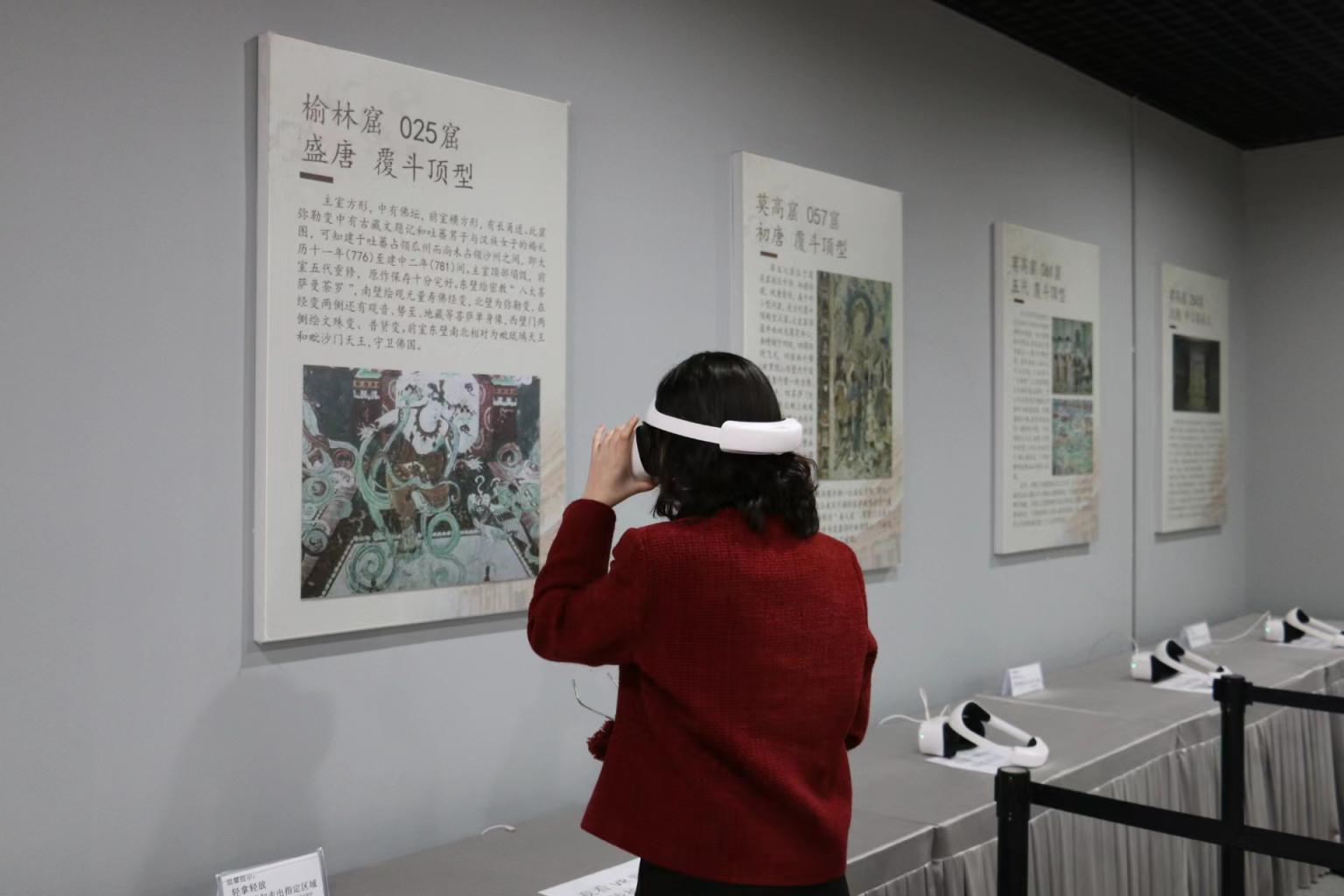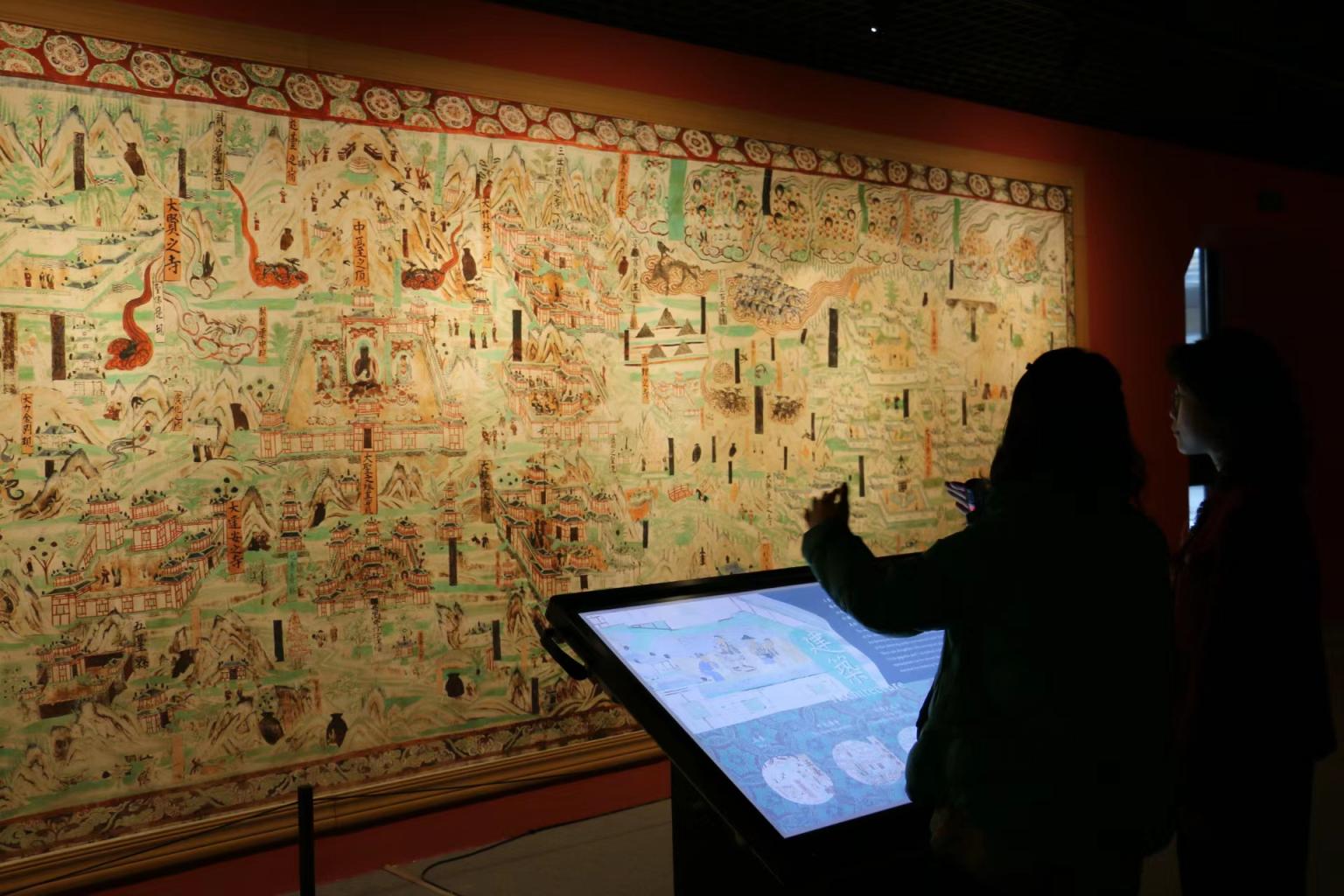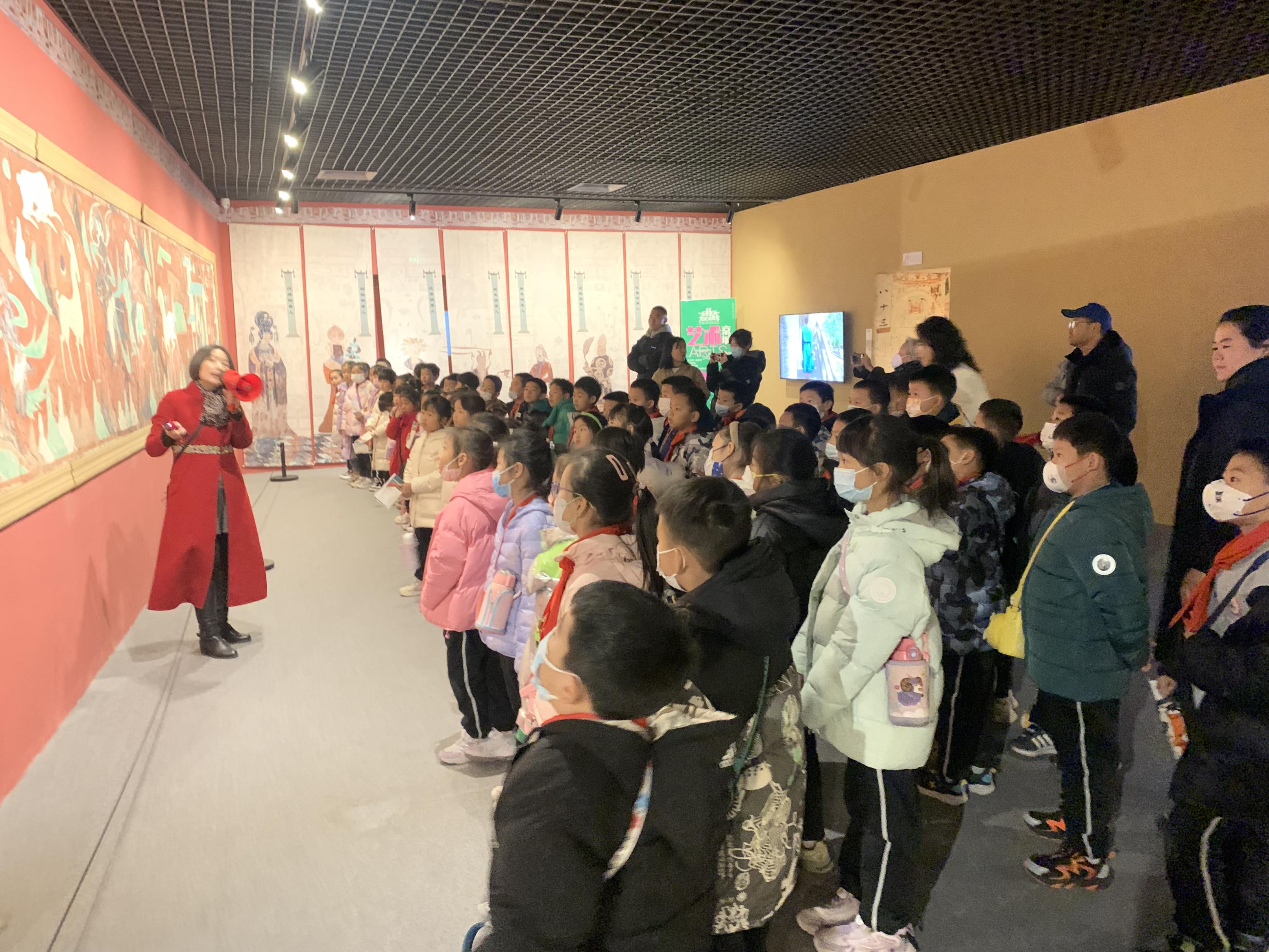After putting on the VR glasses, the audience exclaimed at the spectacular scene. The "Digital Dunhuang Exhibition - Dunhuang on the Silk Road" on display at the National Base for International Cultural Trade, Beijing presents the latest achievements in the digital development of Dunhuang in an all-round way, showcasing the beauty of Dunhuang's culture and art. The exhibition has been well received since its launch, with a wealth of public service receptions and study activities organized, reaching more than 300,000 people online and offline.

The exhibition, jointly organized by the Dunhuang Academy and the National Base for International Cultural Trade, Beijing features 25 high-fidelity digitized mural reproductions, 6 colorful plastic replicas, as well as replicas of Cave 3 and Cave 285 of Mogao Caves, 5 replica musical instruments, and more than 10 ancillary exhibits, among which the vast majority are on display for the first time in Beijing, presenting the audience with the most authentic and original Dunhuang art. The exhibition has been on display since July 2022 and run for nearly three years, which is the first time the Dunhuang Academy to held an exhibition in Beijing for such a long period of time.
Walking into the exhibition hall, a side-lying colorful Nirvana statue appeared in front of the audience, which is from Cave 158 of Mogao Caves. Built in the Middle Tang Dynasty, it can be called the most perfect colorful Nirvana statue of Mogao Caves. The work not only vividly depicts the smiling Nirvana Buddha, but also perfectly combines colorful sculptures and murals. The Dunhuang Academy reproduced the original length of 15.8 meters of colored sculpture for the length of about 5 meters of the same proportion of the entity color sculpture, with accurate three-dimensional data and a high degree of artistic means, to reproduce the charm of Dunhuang color sculpture.

In the exhibition, digital technology has made the artistic treasures of Dunhuang more "accessible". Mogao Caves Cave 61 "Wutai Mountain Map" on the exhibition wall depicts the mountains and rivers, scenery, and customs in detail from Taiyuan, Shanxi through the Wutai Mountain to the Zhenzhou, Hebei (now Zhengding County, Hebei Province), in a total of 250 square kilometers. On the interactive touch screen of the "Wutai Mountain Map", visitors can click on the locations depicted in the painting, such as the Foguang Temple, to learn more about the history and culture. Chinese famous architect Liang Sicheng found the Foguang Temple in 1937 based on the "Wutai Mountain Map", which broke the opinion in the international architectural community at the time that "there are no architectural remains of the Tang Dynasty in China".
The organizers introduced, over the years Dunhuang Academy continues to promote the digitization of Mogao Caves, so as to achieve the purpose of permanent preservation and sustainable use. In this exhibition, the audience can also walk into the original size of the replica caves, which were excavated in the Western Wei Dynasty Mogao Grottoes No. 285 caves. It is the most complete and the richest one, where Chinese and Western cultures are in the convergence and integration. Mogao Cave 3, which was excavated in the late Yuan Dynasty, is diseased and is currently not open to the public for conservation reasons. But through digital technology, viewers can still experience the shock of Dunhuang culture up close.

It is reported that the exhibition also provides professional lecturers from the Dunhuang Academy, the audience can also scan the QR code through the cell phone to obtain illustrated self-explanation. At present, organizers of the exhibition provide for the streets, villages, communities, schools, and other grass-roots organizations 30 immersive research tour learning, group building, party building, public lectures, and other public welfare activities. Children can gain a deeper understanding of Dunhuang art through experiences such as copying and coloring line drawings of Dunhuang frescoes, recognizing and making musical instruments in Dunhuang frescoes, and topographic frescoes. The exhibition will run until December 31st.

Translator: BAI Jing
Reviewer: BAI Jing



